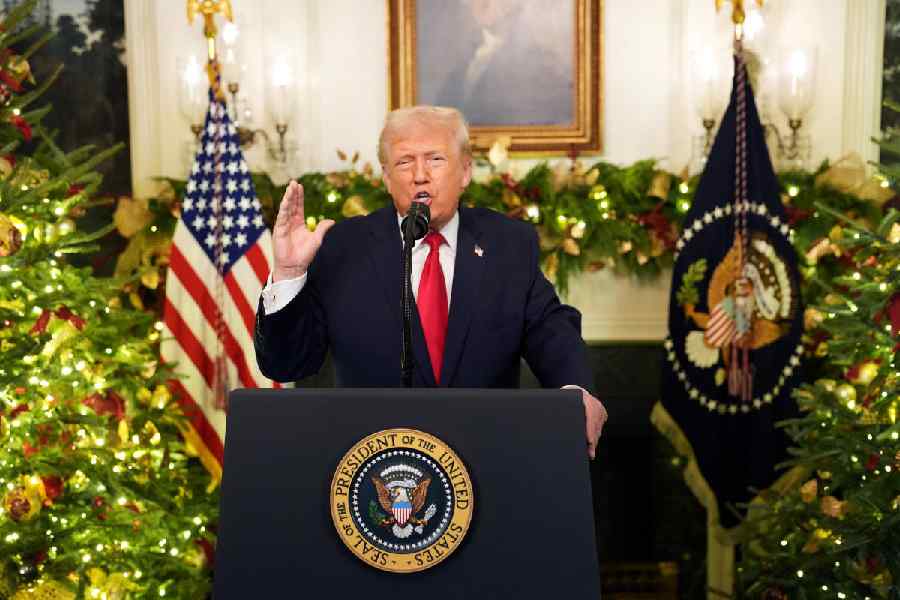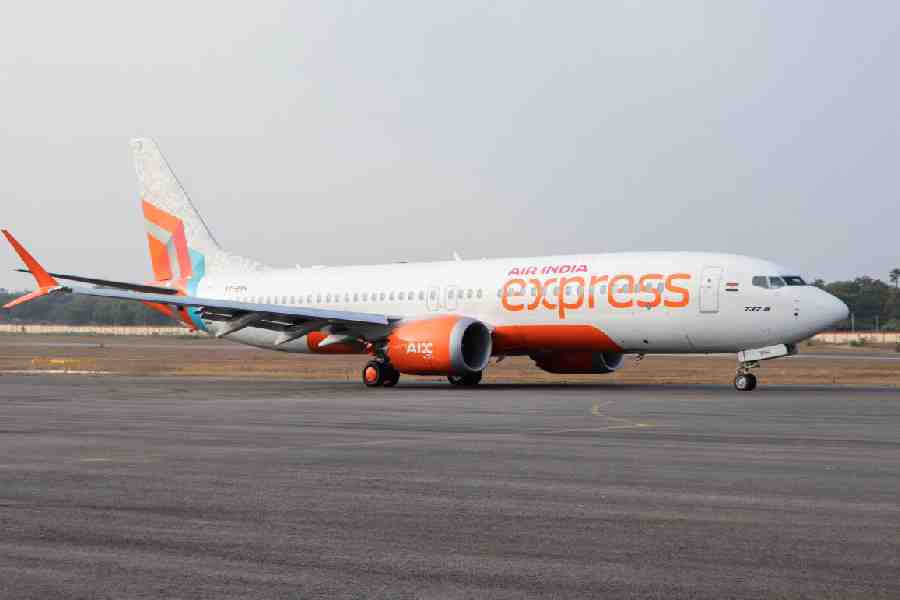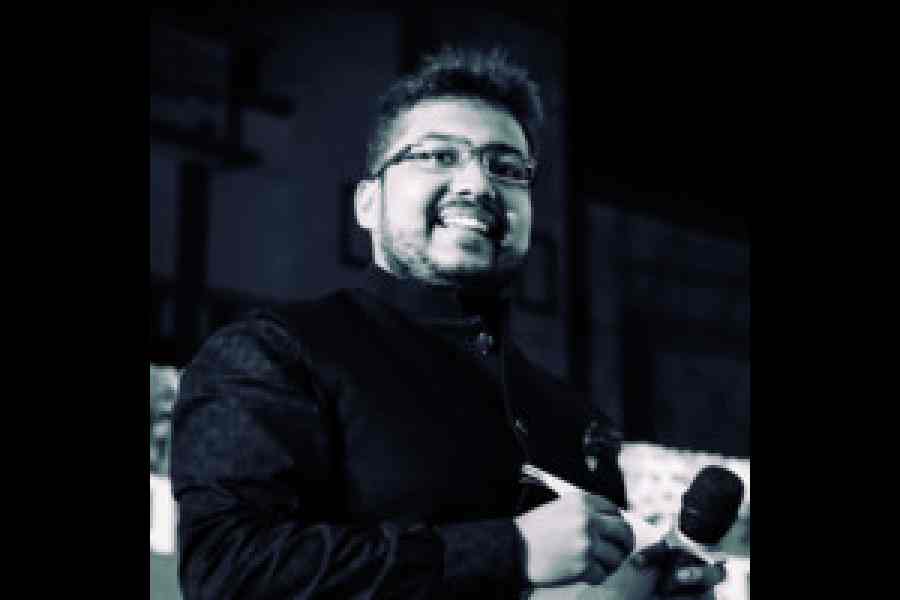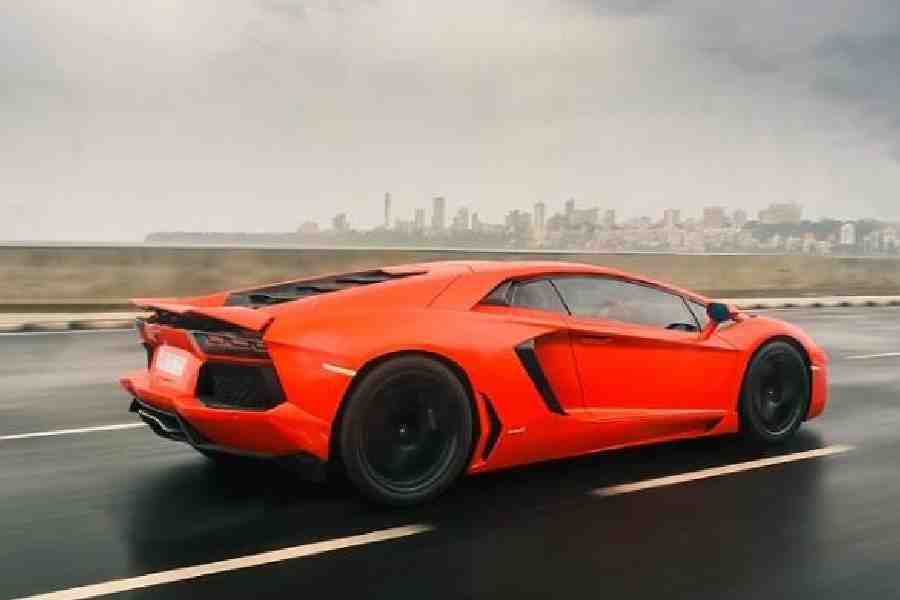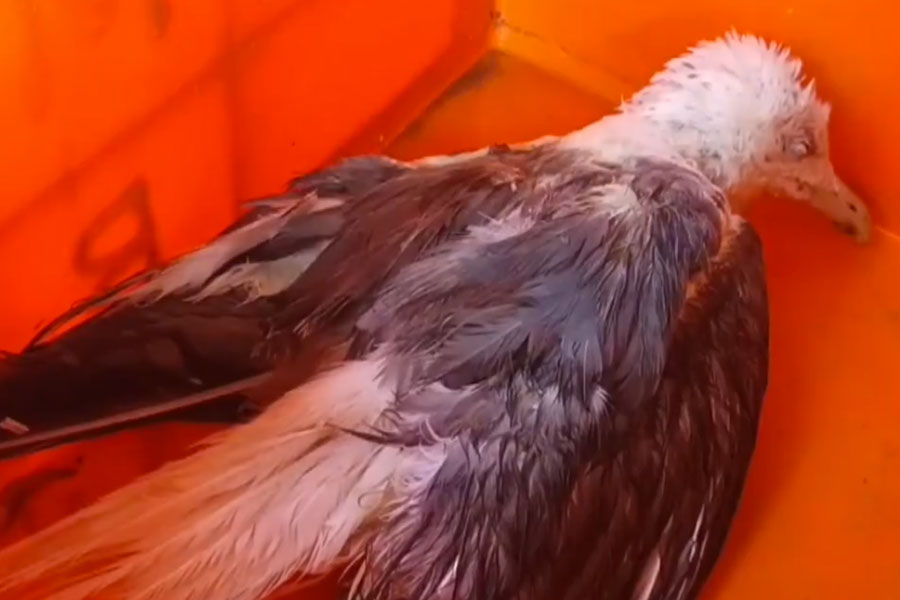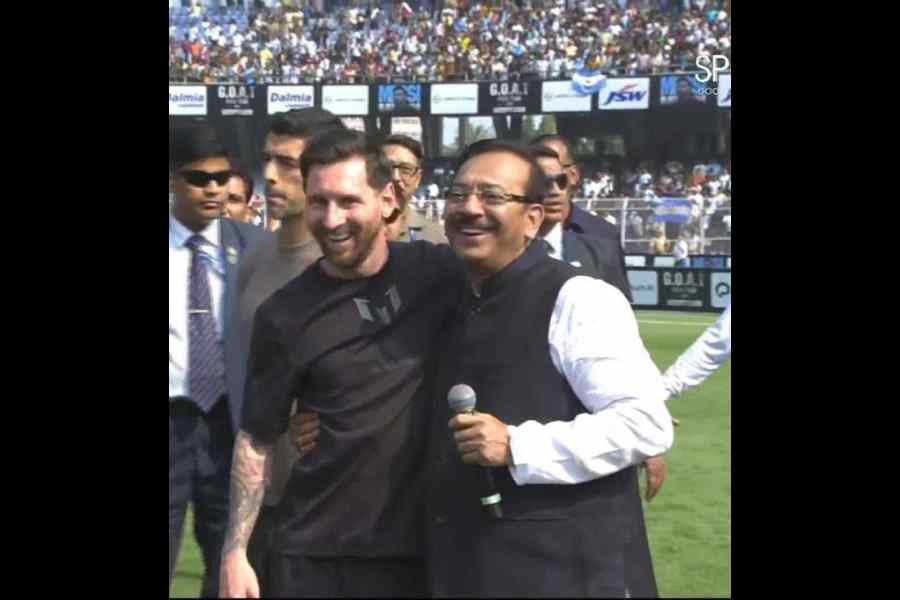|
|
| TRAIL TO PAKISTAN: A sign-board in Srinagar shows the way to Muzaffarabad; Kashmiris celebrate after the bus service was announced (below) |
Mohammed Sayed Malik still remembers the derisive laughter that greeted the electric-blue road-sign when it first came up in downtown Srinagar a little over two years ago. ?Muzaffarabad: 172 kilometres?, exulted the board put up by the ruling People?s Democratic Party. There were loud sneers in the Assembly, the veteran journalist and a confidant of chief minister Mufti Mohammed Sayeed recalls. Out on the streets, most saw it as an empty political gimmick.
Muzaffarabad, then, was 172 light years away. On Thursday, when the road to Muzaffarabad opens up and the first buses in 58 years leave for Pakistan-controlled Kashmir, it will be a mere seven-hour drive from Srinagar. Not surprisingly, nobody is laughing at the sign-boards anymore.
 |
There is, instead, a cautious sense of optimism in Kashmir. There is hope, for the opening up of the road, the residents stress, signals the acceptance of a 50-year-old popular demand. And there is a sense of wariness, for India and Pakistan have always been viewed in the Valley with suspicion. ?It?s like a chocolate being put into my mouth,? says activist and educationist Nusrat Andrabi. A piece of candy, she hints, that may be taken out any moment.
The road is like any other ? a long stretch that winds its way through Baramullah and Uri, running along the Jhelum river. Poplar trees line the road, cutting across apple orchards still frozen after a severe winter and mulberry tree stumps awaiting spring. But there are some signs of the impending bus journey; roads are being tarred and repaired, and roofs and window-sills have been freshly painted.
Measure for measure
In Srinagar, they call it the mother of all CBMs ? the first Confidence-Building Measure between India and Pakistan that takes Kashmir, the crux of the problem, into account. ?It is not ?a? significant step, but ?the most? significant step ever taken,? says Mehbooba Mufti, PDP leader and member of Parliament.
Clearly, for the people of Kashmir, the road has always been more than a mere stretch of tarred surface. It is a road to a region politically severed and to a people geographically divided. The Kashmiris would like to see it as a road to development, and, perhaps, peace. ?Opening up the road is opening up a door to opportunity,? says Andrabi.
So, Imtiaz Ahmed Lone, an assistant professor of agriculture, is packing gifts ? clothes, walnuts and almonds ? for cousins he has never seen before. ?When I told my mother that I was going to Muzaffarabad, she burst into tears. She wept tears of joy because it was my late father?s dream to visit our relatives across the border,? Lone, who plans to take the first bus to Muzaffarabad, says.
The story of divided families of Kashmir is an old one, but still raw after all these years. Though the bulk of people divided by the border are in Poonch and Rajouri in Jammu, there is a sizeable section in Kashmir ? especially in Uri and Baramullah ? with relatives in Muzaffarabad.
The road was closed in 1947 after armed men from the Northwest frontier of Pakistan raided Kashmir, leading to a war that India and Pakistan fought for a year. In 1948, when a ceasefire was announced, India controlled Kashmir on the eastern side of the border, leaving the region beyond the Kaman Point ? the last post in India ? to Pakistan.
There are stories that are told and retold about the forced separation of families and neighbours. One day they lived side by side, the next day they found themselves across a hostile border, with no means of communication. The two governments seldom allowed visits between the people after militancy first rocked the Valley in 1989, and there were no telephone links.
| It’s the time to party |
| The final course |
| There is nothing quite like sitting in a senior officer’s room and unabashedly listening to a one-sided telephonic conversation about Sonia Gandhi’s visit to Srinagar. The Congress president will accompany Prime Minister Manmohan Singh when the first buses to Muzaffarabad are flagged off on April 7. The administration is wondering where she should be put up. Should she be in picturesque Gulmarg, or on the shores of the placid Dal Lake? The nitty-gritties are still being discussed, but some of the plans for the historic bus journey have been signed and sealed. The tourism department is sending a waza — a Kashmiri bawarchi — and his team to Salamabad a day before the bus trip to make arrangements for a grand feast for the travellers. The menu includes chicken roganjosh, tomato paneer, phirni and saffron kahwa. Sheermals are being brought in from Pampore, famous for its sweetened rotis. In Salamabad, five kilometres from Uri, workers are busy erecting a pre-fabricated structure that will act as a tourist reception centre. A state-of-the-art office for customs and immigration has come up near the border at Kaman Post, and the old bridge that spans across the two Kashmirs restored. In Srinagar, candles are difficult to come by, for the government has plans of floating thousands of candles on the Dal Lake as part of a cultural show to be held for the first set of travellers from Muzaffarabad. The opening of the road not taken, clearly, is a cause for celebration. |
?A brother who wanted to communicate with his sister would chuck a note tied to a stone across the Neelam river,? says Major-General R. S. Mehta, General Officer Commanding, 19 Infantry Division. ?You needed powerful lungs to be heard across the roar of the river, and a strong arm to be able to chuck the stone across,? he says.
So, it?s not surprising when Ghulam Fatima, another would-be passenger, says that she is determined to go to Muzaffarabad despite threats from militant organisations to the bus and its travellers. She has not seen her daughter since 1988 when she got married to her cousin across the border. ?I will go, come what may,? Fatima tells reporters in Srinagar.
Beyond borders
But, as the people of Kashmir stress, the opening of the road is not just about families meeting. By allowing the people of the two Kashmirs to meet just with travel permits, the Indian and Pakistan governments have opened up a space ? physically and metaphorically ? blocked for decades. For the Pakistanis, it indicates an acceptance of the Line of Control as the border ? New Delhi?s position that Islamabad has long opposed. For the Indians, it is an acknowledgment that the two Kashmirs are intrinsically linked. ?I don?t think either India or Pakistan has lost ground because of this,? says Communist Party of India (Marxist) MLA, M. Y. Tarigami. ?For I have never seen an issue in Assembly that has evoked such unanimous approval,? he says.
The Srinagar-Muzaffarabad Road ? better known as the Jhelum Valley Road ?was the original ? and only ? road that the people took for travel and trade. There was the seldom-taken Banihar Cart road, which led to the metalled Banihal Road in 1953. ?But till 1947, the Jhelum Valley was the mainline of Kashmir,? says Malik.
Historically, too, the road ? and its adjuncts ? have been openings to influences and communication. Chinese traveller Hiuen Tsang mentions the ancient Jhelum Valley route ? connecting Kashmir with Hazara, Taxila and Kabul ? and Kashmir University historian Mohammed Ishaq Khan points out this was the road that Sufism took to Kashmir.
The modern road came up in 1890, changing the lives of people who, till then, used the river for travel. ?Isolation broke down when the road opened up,? says Khan. ?But a barrier was created in 1947.?
The road has been a secessionist plank since then. ?Rawalpindi Road Khol Do,? went the slogan those days, for the road veered its way from Muzaffarabad to Pindi, Lahore, Amritsar and Delhi. The PDP resurrected the demand in the run-up to the 2002 state Assembly elections, and included it in its poll manifesto.
There has been a combination of factors at play in the opening up of the road ever since it was taken up by former Prime Minister Atal Bihari Vajpayee.
There were, of course, the usual arguments of protest when the idea was mooted. Some feared that it would be a route for militants from across the border. ?It would be easier to keep an eye on militants who come in with passports,? Vajpayee is believed to have retorted at a meeting attended by senior Kashmiri leaders.
Those in favour of opening of the road thought it would give an advantage to India. Seeing Muzaffarabad, many argued, would give a glimpse to people on this side of Kashmir of a comparatively underdeveloped region. Locals point out that Kashmir has a lot more to boast of ? a relatively freer society, better education facilities and a more prosperous middle class. ?I am told that they don?t even make matches in Muzaffarabad. I would like to go there and see why they are lagging behind,? says Amin, a Srinagar resident.
Better late than never
The move ? once just on paper ? became a reality as subcontinental ties changed dramatically in the last two years. President Pervez Musharraf and Prime Minister Manmohan Singh were talking peace, and India and Pakistan were playing cricket. And then came the ceasefire last November, as India and Pakistan succumbed to domestic and world pressure. ?Today, in the international community, you would like to be seen as a Nice Guy,? says a Kashmir observer.
The Kashmiri, not unnaturally, is a little apprehensive of the two governments? motives. Still ? barring a handful of people, such as Hurriyat leader S.A.R. Geelani ?most have openly supported the road. Politically, the move is being seen as a master-stroke by the ruling PDP-Congress combine. The groundswell of support has forced the Opposition to back the move. And, to top it, by ceding an old secessionist plank, the government has also successfully sidelined the Hurriyat Conference. So much so that insiders insist Hurriyat chief Maulvi Farooq would take the bus to Muzaffarabad on its third or fourth trip.
For the people, though, it?s just the beginning. Right now, only two 19-seaters ? carrying 30-odd people ? will cross the border from each side every fortnight, parts of the road being too narrow for bigger buses to pass. An intelligence official states that there is a growing demand for application forms that travellers need to fill up before being cleared by the government for travel.
But for people such as businessman Zaffar Ahmed Hakak ? whose name is on the first list of passengers ?the road would bear fruit only when governments permit trade ? which border travellers are not allowed to do. The locals say that land prices have shot up in Uri in anticipation of the trade that will follow the opening of a link long lost.
Right now, the opening of the road is a mark on the map. ?The road will take us to Muzaffarabad. But we would like to see how far it takes us politically,? says the observer.
Still, people like Andrabi are not complaining. ?This should have happened 50 years ago. But there is an old saying in Persian: ?Der ayad, drust ayad ? better late than never,?? she says.



